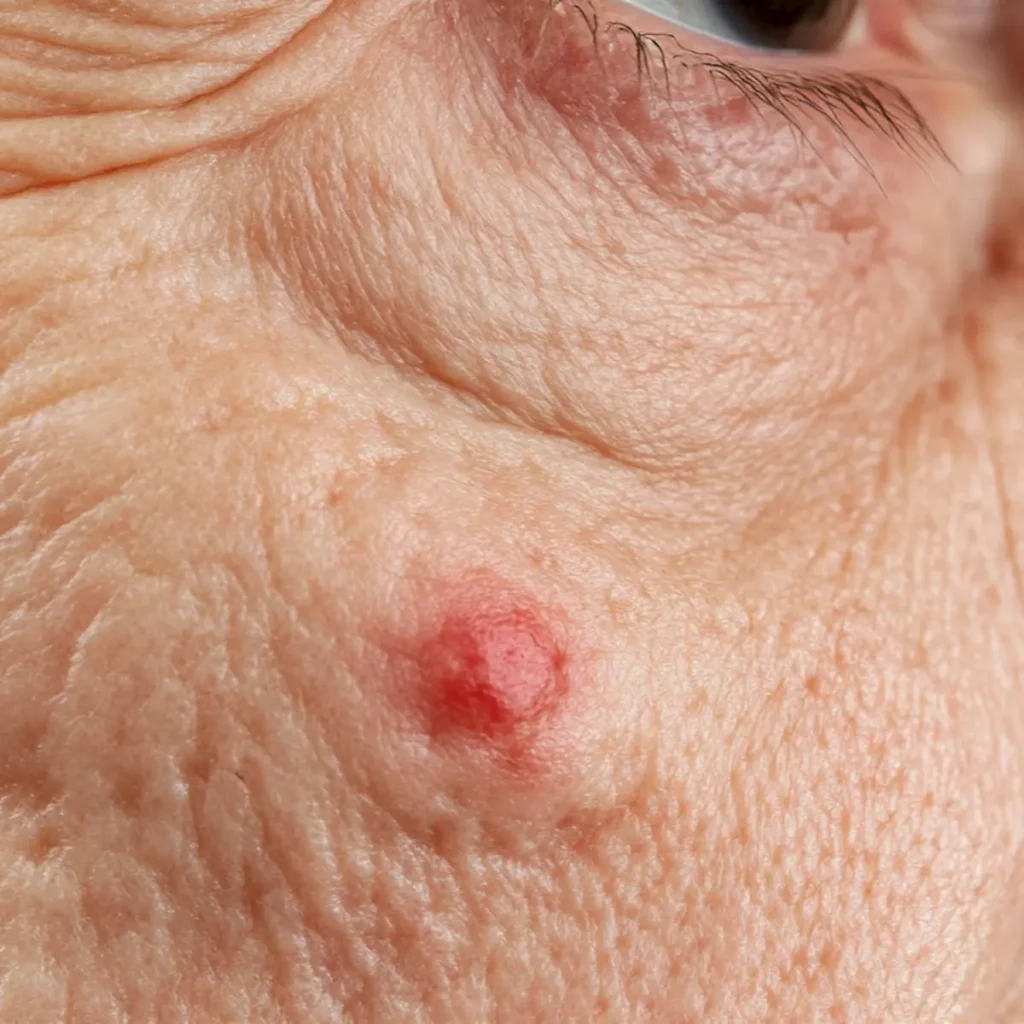The ABCDE rule is a simple, effective guide for spotting dangerous moles and identifying potential signs of skin cancer.
Skin cancer is one of the most common cancers worldwide, yet it’s also one of the most preventable when detected early. Moles, freckles, and other skin spots are a normal part of our skin, but it’s essential to know when a mole might signal something more serious, like melanoma.
Contact us today to schedule an appointment. We are here to help!

A – Asymmetry
Healthy moles are typically symmetrical, meaning if you draw a line through the middle, both halves would match.
- Warning Sign:
- If one half of the mole does not look like the other, it could be a sign of melanoma. Asymmetry indicates that the cells in the mole may be growing unevenly.
- What to Do:
- Compare the two halves of your mole.
- Use a mirror or ask a partner to check hard-to-see areas like your back.
B – Border
The border of a normal mole is usually smooth and well-defined.
- Warning Sign:
- If the edges of your mole are irregular, scalloped, or blurred, it’s time to take a closer look. Uneven borders are a hallmark of abnormal cell growth.
- What to Do:
- Check for jagged, notched, or poorly defined borders.
- Take a photo to track changes over time.
C – Color
Moles are typically a single, uniform color, often brown or tan.
- Warning Sign:
- It could be a sign of melanoma if your mole has multiple colors or shades (such as brown, black, red, white, or blue). Uneven pigmentation is a red flag.
- What to Do:
- Look for areas of darkening or lightening within the mole.
- Be wary of white or blue tones, as these are less common and potentially serious.
D – Diameter
Size matters when it comes to identifying suspicious moles.
- Warning Sign:
- If a mole is larger than 6 millimeters (about the size of a pencil eraser), it’s worth getting checked. However, keep in mind that smaller moles can also be cancerous.
- What to Do:
- Measure the diameter of your mole using a ruler or app.
- Regularly monitor growth over time, as increasing size can indicate a problem.
E – Evolving
The most critical sign of a dangerous mole is change. Healthy moles generally remain the same over time.
- Warning Sign:
- If a mole changes in size, shape, color, or texture—or if it starts itching, bleeding, or crusting—it’s time to see a dermatologist.
- What to Do:
- Document changes can be made by taking monthly photos of suspicious moles.
- Pay attention to new moles appearing after age 30, as these could be atypical.
When to See a Dermatologist
If you notice any of the ABCDE signs, it’s essential to consult a dermatologist promptly. Early detection is critical for successful treatment of melanoma and other skin cancers.
Signs You Shouldn’t Ignore:
- A sore that doesn’t heal.
- A mole that becomes painful, itchy, or tender.
- New growths or changes in pre-existing moles.

Prevention Tips
While early detection is vital, prevention is even better. Here’s how you can reduce your risk of developing skin cancer:
- Use Sunscreen Daily: Apply a broad-spectrum SPF 30 or higher, even on cloudy days.
- Avoid Tanning Beds: UV radiation from tanning beds is a significant risk factor for skin cancer.
- Wear Protective Clothing: Hats, sunglasses, and UPF-rated clothing can shield your skin from harmful UV rays.
- Seek Shade: Avoid direct sun exposure, especially between 10 a.m. and 4 p.m.
Contact Jacksonville Dermatology & Cosmetic Surgery Today
Have questions about your skin health, or are you interested in learning more about our services? Our Jacksonville Dermatology & Cosmetic Surgery expert team is here to help! Whether it’s about mole removal, scar treatments, or your skincare journey, we’re just a click or call away.
Contact us today to schedule an appointment. We are here to help!
GET IN TOUCH

